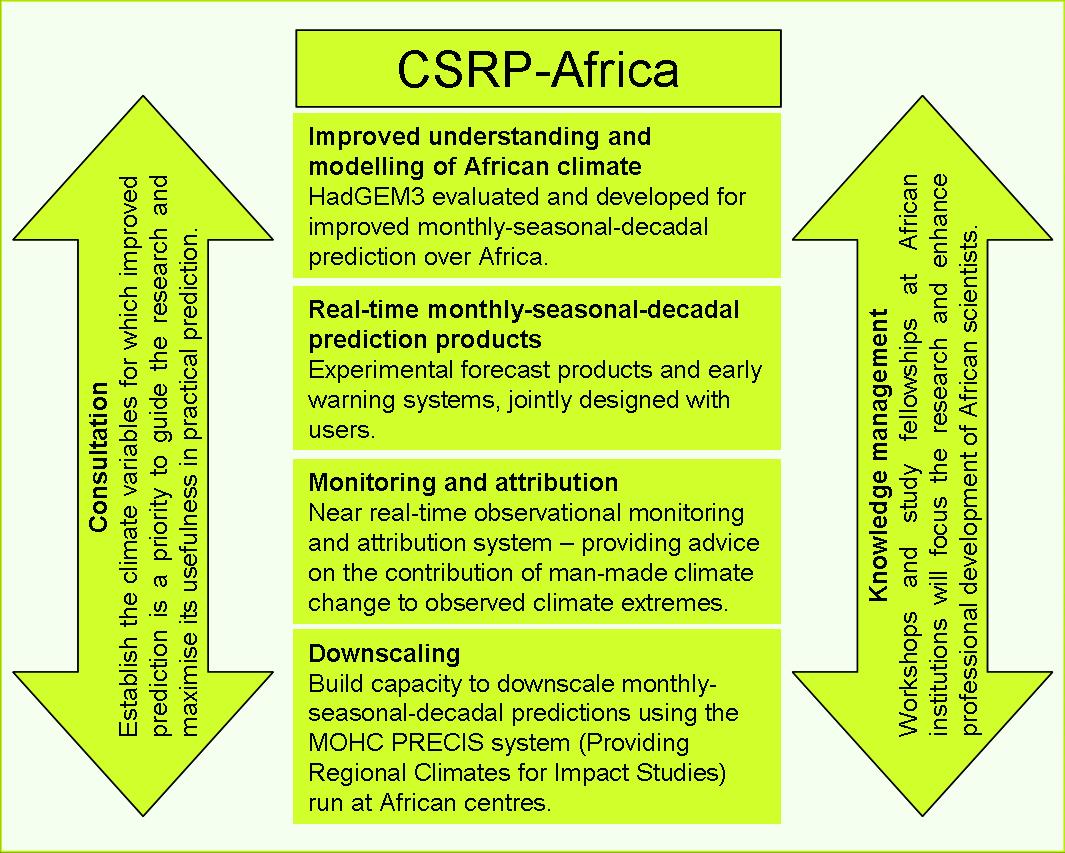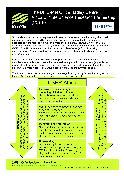|
Climate variability and change have huge impacts on food security,
water availability, human health and social and economic infrastructures. This
is particularly so in Africa where vulnerability to hazardous weather and the
natural vagaries of the climate is already high.
Substantial gains to sustainable poverty reduction can be achieved in Africa
through improved predictions of climate variability and change. This needs
(among other things) improved understanding and modelling of African climate
and its drivers. A new African Climate Science Research Partnership (CSRP) between
the Department for International
Development (DFID) of the UK Government and the
Met Office Hadley
Centre (MOHC) is working, in consultation with African stakeholders, to advance the
scientific understanding and bring new science into use.
|
|
Background, Challenges and Strategy
|
|
With climate change, reference to past historical data is becoming less reliable as a
means for estimating the risk of climate extremes. Seasonal forecasts provide
the basis for the systematic prediction of climate risk out to 6-months ahead and they
can take into account both climate variability and change. These seasonal forecasting
systems can also form the basis for early warning systems to enable the better planning
of relief activities. Improvements to the understanding and modelling of climate over
Africa can be pulled through into the seasonal forecasting systems and thereby improve
the skill and usefulness of these forecasts for Africa.
|
On the longer decadal timescales, the climate change and variability signals are
typically of the same magnitude. A starting point in adaptation planning is to build
resilience to current climate variability, whilst recognising that climate change
means the current climate conditions will substantially change in the future. Decadal
prediction systems enable both current variability and future climate change to be
systematically accounted for.
There is a growing tendency to attribute all climate related local and
regional changes to anthropogenic increases in greenhouse gases whereas, in fact,
other drivers such as natural climate variability and land use changes (e.g.
deforestation) can be of first order importance. The development of near real time
systems that can attribute the causes of observed changes is a high priority if
mis-attribution and erroneous and expensive adaptation measures are to be avoided.
Information about the future climate is needed on a scale that is directly usable
by in-country stakeholders. This requires downscaling of global climate information
to the local level. The products currently available (e.g. seasonal forecasting
products) are of limited use on the ground because they do not address key stakeholder
requirements. There is an urgent need, therefore, to establish the priority variables
and regions of interest for long range (monthly-to-decadal) forecast information,
through discussions with relevant projects and institutions operating in Africa.
In order that the most useful information can flow between decision-makers and the scientific
community within Africa, CSRP activities are committed to focussing the research and
enhancing the professional development of African scientists. To this end, training workshops
will be run in order to help develop and disseminate new products based on CSRP research. In
addition,a mechanism will be developed to award study fellowships
to African graduate students to pursue research on African climate issues, as a way of
strengthening the pool of in-country climate science researchers.
|
CSRP Framework

Click to enlarge
Download the CSRP flyer here

English |

Français |
|
|
The DFID-Hadley Centre Climate Science Research Partnership (CSRP) will complement
other DFID research initiatives such as
'Climate Change Adaptation in Africa' (CCAA) and
'Ecosystem Services
for Poverty Alleviation' (ESPA). It will also seek to liaise closely with the
'Climate for Development' (CLIMDEV) project which aims to improve the collection and
provision of climate observations across Africa.
Learn more about the project.
Back to top |


